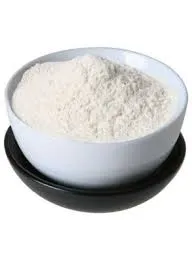
Nov . 17, 2024 13:27 Back to list
hydroxyethyl cellulose price per kg
Understanding the Price Dynamics of Hydroxyethyl Cellulose (HEC) per Kg
Hydroxyethyl cellulose (HEC) is a versatile water-soluble polymer derived from cellulose, widely used in various industries including construction, pharmaceuticals, cosmetics, and food. Its unique properties, such as thickening, gelling, and stabilizing capabilities, make it an essential ingredient in formulations ranging from adhesives to personal care products. One of the critical aspects of utilizing HEC is its pricing, which can fluctuate due to multiple factors. This article provides an in-depth look at the pricing dynamics of hydroxyethyl cellulose per kilogram and the factors that influence these costs.
Overview of Hydroxyethyl Cellulose
HEC is derived from natural cellulose, which is abundant in plant materials. The process of making HEC involves etherification, where ethylene oxide reacts with cellulose in an alkaline medium. The resulting polymer is appreciated for its non-ionic nature, high water retention, and ability to modify viscosity at various temperatures. This adaptability is highly valued, especially in applications requiring precise control over texture and thickness.
Current Pricing Trends
As of the latest data, the price of hydroxyethyl cellulose per kilogram can range significantly based on quality, purity, and the specific application requirements. Generally, prices can be expected to span from $5 to $30 per kilogram. The higher end of the spectrum typically includes specialty grades that possess enhanced functionalities or are designed for specific applications, such as pharmaceutical or food-grade HEC.
Factors Influencing HEC Prices
1. Raw Material Costs The primary raw material for HEC is cellulose, which is derived from natural sources like wood pulp or cotton. The price of cellulose can fluctuate based on market demand, availability, and environmental factors affecting crop yields. For instance, any disruption in timber supply due to environmental regulations or logging restrictions can impact cellulose prices, consequently affecting HEC pricing.
hydroxyethyl cellulose price per kg

2. Manufacturing Processes The complexity of the manufacturing process also plays a crucial role in determining the price of HEC. Advanced processing techniques that enhance the purity or functional characteristics of HEC may increase production costs. Manufacturers investing in sustainable or eco-friendly practices may also incur higher costs, which can be passed on to consumers.
3. Demand Across Industries The demand for hydroxyethyl cellulose is rising across multiple sectors, including construction (as a thickener in cement), cosmetics (in lotions and shampoos), pharmaceuticals (as a binding agent in tablets), and even food production (as a food thickener). An upsurge in demand from any of these industries can lead to increased prices, especially if the supply of HEC does not keep pace.
4. Geopolitical Factors Global events, such as trade agreements, tariffs, and political stability in cellulose-producing countries, can influence overall pricing structures. Trade restrictions or tariffs imposed on raw materials can lead to increased costs for manufacturers, thus affecting the final price of HEC products.
5. Market Competition The competitive landscape within the HEC market also affects pricing. With several manufacturers offering varied grades of HEC, the pricing strategies adopted by key players can determine the average market price. Discounts, bulk purchasing options, and loyalty incentives can create price variations among suppliers.
Forecasting Future Prices
Looking ahead, the price of hydroxyethyl cellulose per kilogram is expected to be influenced by trends in sustainability and technology innovations. As more industries prioritize eco-friendly materials, the demand for sustainably produced HEC may increase, potentially leading to a rise in its price. Conversely, advancements in production technology could lower manufacturing costs, offering a stabilizing effect on prices in the long run.
In conclusion, the price of hydroxyethyl cellulose per kilogram is determined by an interplay of several factors, including raw material costs, manufacturing processes, demand across various industries, geopolitical influences, and market competition. Understanding these dynamics can help manufacturers, suppliers, and consumers make informed decisions regarding the procurement and use of HEC in their products. As industries evolve and adapt to new challenges, keeping a close eye on HEC pricing trends will be essential for strategizing future investments and product development.
-
Versatile Hpmc Uses in Different Industries
NewsJun.19,2025
-
Redispersible Powder's Role in Enhancing Durability of Construction Products
NewsJun.19,2025
-
Hydroxyethyl Cellulose Applications Driving Green Industrial Processes
NewsJun.19,2025
-
Exploring Different Redispersible Polymer Powder
NewsJun.19,2025
-
Choosing the Right Mortar Bonding Agent
NewsJun.19,2025
-
Applications and Significance of China Hpmc in Modern Industries
NewsJun.19,2025







